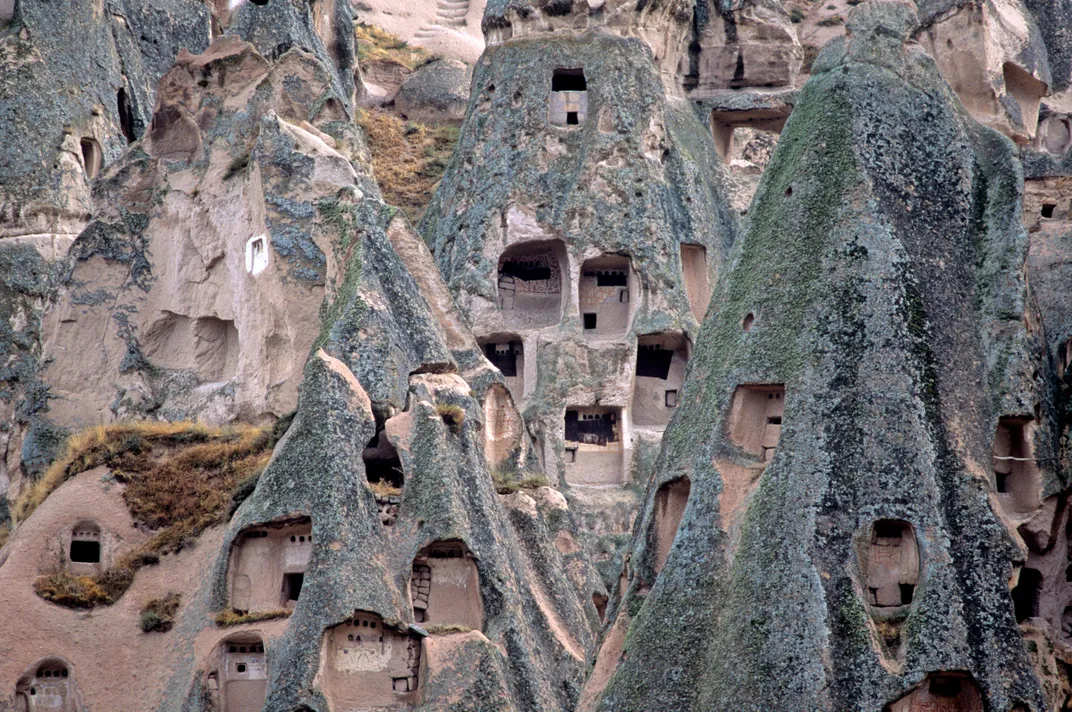Turkey’s ‘Fairy Chimneys’ Were Millions of Years in the Making
Nature built them, but humans made them their own
On the high plateau of central Anatolia in Turkey, magic can seem real. What else but enchantment could shape rock and stone into spindly stems that rise, mushroom-like, out of the earth? How could geology ever explain such a surreal phenomenon? Together, the landscape of spires looks like something out of a Salvador Dalí fever dream. Even the nickname of these formations — "fairy chimneys" — evokes the supernatural.
But magic doesn't exist. (Too bad.) The chimneys are a result of a geologic process that began millions of years ago, when volcanic eruptions rained ash across what would eventually become Turkey. That ash hardened into tuff, a porous rock, which was covered by a layer of basalt. Finally, the long work of erosion began. As millennia passed, the softer tuff wore down, giving way to pillars that stand as tall as 130 feet. The harder basalt erodes more slowly, forming a protective, mushroom-shaped cap over each one. Just like that, a fairy chimney is born — no pixie dust required.
That's not to say the chimneys aren't magical. The history that took place around these formations — and the ingenious ways humans have used them for centuries — are stories worthy of any fairy tale.
The chimneys are located in a region once known as Cappadocia, which ran through the historic Silk Road trading route. Century after century, the area was raided and invaded by a who's who of European empire builders. The Hittites, the Persians, Alexander the Great, the Romans, the Byzantines, and the Ottomans all laid claim to the land at one time or another.
During the Roman period, persecuted Christians fled in droves to Göreme, a town in Cappadocia. There, they learned that the soft tuff could easily be excavated and built homes and churches in the chimneys. They expanded ancient caves into underground cities like Kaymakli and Derinkuyu — massive refuges that could shelter thousands. Now designated a World Heritage Site, the rock sites of Cappadocia and Göreme National Park are described by Unesco as "one of the world's most striking and largest cave-dwelling complexes."
For centuries, locals would flee into these tunnels under threat of invasion, shielding themselves from outsiders with heavy stone doors and intricately designed traps. Today, these hand-dug artifacts create a remarkable bond with Cappadocia's natural wonders. (Tourists can even sleep in certain caves and chimneys, which have been remodeled into uncommon hotels.) The fairy chimney is a product of its many environments, a miracle millions of years in the making. Within a relative blink in time, humans transformed that miracle into a home, burrowing into the magic and making it their own.
Planning Your Next Trip?
Explore great travel deals
Smithsonian magazine participates in affiliate link advertising programs. If you purchase an item through these links, we receive a commission.







